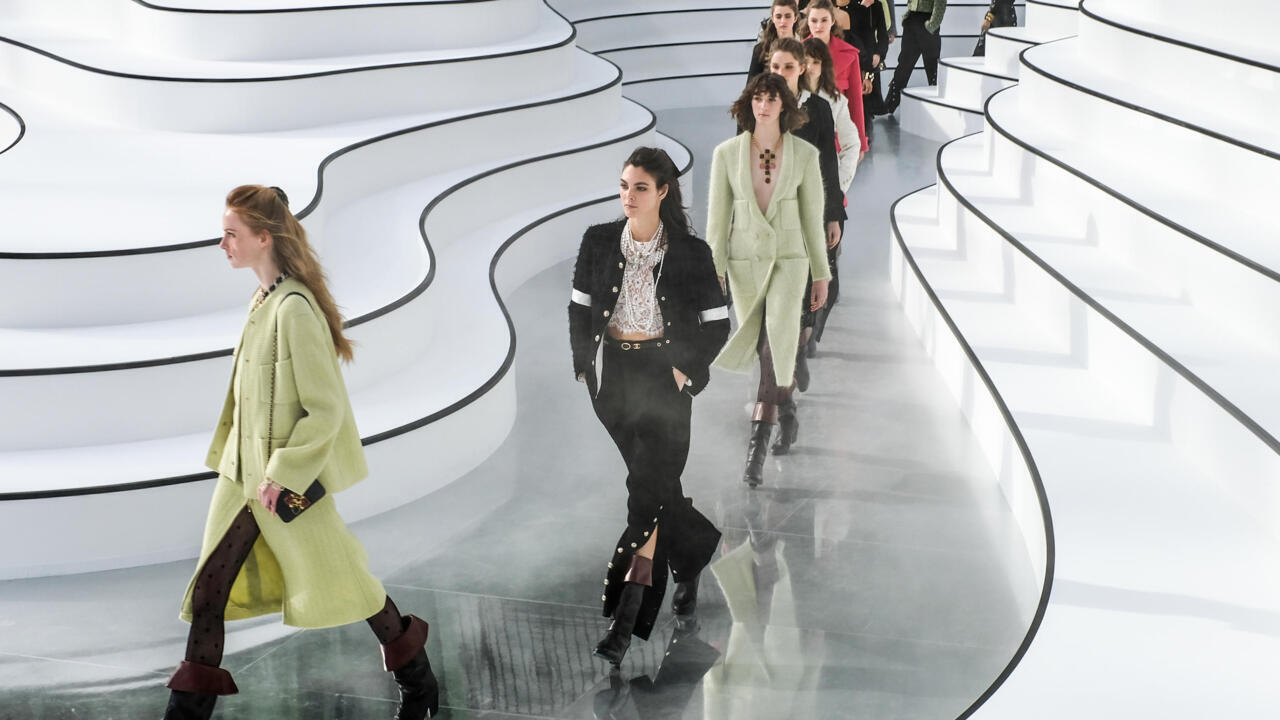The Fashion Industry 2025: Evolution, Impact, and Trends is one of the most influential sectors in the world, shaping not only how we dress but also how we express ourselves. Over the centuries, fashion has evolved from an exclusive craft reserved for the elite to a global phenomenon that impacts millions of lives. Today, fashion is an amalgamation of culture, technology, sustainability, and social movements. This article explores the evolution of the fashion industry, its profound societal impact, and the emerging trends that are reshaping the future of fashion.
The Evolution of the Fashion Industry 2025
The history of The Fashion Industry 2025 industry can be traced back to the 19th century, when fashion houses began to emerge in Paris. Haute couture, or high-end custom-made fashion, marked the beginning of the fashion industry as a business. Charles Frederick Worth, often regarded as the first fashion designer, opened his atelier in Paris in 1858. Worth’s creations were made-to-measure and designed exclusively for his wealthy clientele. This set the stage for the establishment of luxury fashion houses such as Chanel, Dior, and Yves Saint Laurent, which defined the haute couture culture of the 20th century.
Search More The Fashion Industry 2025
As the 20th century unfolded, fashion began to diversify with the rise of ready-to-wear clothing. The invention of the sewing machine in the late 19th century paved the way for mass production, making fashion more accessible to the middle class. Designers such as Coco Chanel revolutionized women’s fashion by simplifying clothing, introducing garments like the little black dress and the Chanel suit, which became symbols of modern elegance. The post-World War II era saw the rise of iconic designers like Christian Dior, who introduced the “New Look” in 1947, characterized by soft shoulders, a cinched waist, and full skirts, which redefined femininity.
Read More How to Remove Dark Circles
In the 1960s and 1970s, fashion became an important cultural force. The rise of youth culture, with its countercultural movements, saw the popularity of styles like mod fashion and the psychedelic prints of the hippie era. Designers such as Yves Saint Laurent embraced these movements, pushing the boundaries of fashion by introducing garments like the tuxedo suit for women. The 1980s ushered in an era of excess, with designers like Gianni Versace, Jean-Paul Gaultier, and Vivienne Westwood defining fashion with bold prints, extravagant accessories, and provocative designs.
By the late 20th century and into the early 21st century, The Fashion Industry 2025 experienced a transformation with the advent of fast fashion. Brands like Zara, H&M, and Forever 21 emerged, providing affordable and trendy clothing at a rapid pace. Fast fashion allowed consumers to access the latest styles in weeks rather than months, making fashion more democratized but also leading to concerns over sustainability and labor practices.
The Impact of the Fashion Industry
The fashion industry is not just about clothing—it’s a powerful cultural and economic force. Fashion plays a significant role in shaping societal norms, identity, and self-expression. Clothing can symbolize social status, political affiliation, or cultural heritage. The way people dress often reflects the values and attitudes of the time, and fashion has historically mirrored broader shifts in politics, economics, and social movements.
For example, in the 1960s, the rise of the feminist movement and civil rights activism influenced fashion, with women embracing more androgynous styles and African-American communities gaining visibility in the fashion world. In the 1980s, designer fashion became synonymous with wealth and success, and brands like Gucci and Prada symbolized status and luxury. More recently, fashion has become an avenue for social and political activism, with designers and influencers using their platforms to advocate for inclusivity, sustainability, and body positivity.
Economically, the fashion industry is a powerhouse. Valued at over $2.5 trillion globally, it employs millions of people around the world, from designers to manufacturers to retail workers. Fashion is a vital component of many countries’ economies, especially in major fashion capitals like Paris, Milan, New York, and London, where fashion weeks generate significant revenue and media attention.
However, the fashion industry also has a darker side. Fast fashion has led to environmental degradation, with textile waste and pollution becoming major concerns. The production of cheap, disposable clothing often involves unethical labor practices, with workers in developing countries facing low wages and unsafe conditions. As a result, there is a growing call for sustainability, fair wages, and ethical production in the fashion world.
Emerging Trends in the Fashion Industry
As the The Fashion Industry 2025 continues to evolve, several key trends are shaping its future. These trends reflect the changing tastes of consumers, advancements in technology, and a growing awareness of environmental and social issues.
- Sustainability and Ethical Fashion One of the most significant trends in recent years is the rise of sustainable fashion. Consumers are increasingly concerned about the environmental impact of the fashion industry, and as a result, there is a growing demand for eco-friendly materials and ethical production practices. Brands like Patagonia, Stella McCartney, and Reformation have become leaders in sustainable fashion, offering clothing made from organic cotton, recycled fabrics, and low-impact dyes. The circular economy, which focuses on reducing waste by recycling or reusing materials, has also gained traction in fashion, with initiatives like clothing rental services (e.g., Rent the Runway) and second-hand markets (e.g., Depop) promoting more sustainable consumption.
- Digital Transformation and Virtual Fashion The digital revolution is reshaping the fashion industry in several ways. Online shopping has become the norm, with e-commerce platforms like ASOS, Amazon, and Zalando revolutionising the way consumers purchase clothing. Additionally, the rise of augmented reality (AR) and virtual reality (VR) technologies has allowed consumers to “try on” clothes virtually, offering a more immersive shopping experience. Social media platforms like Instagram and TikTok have also played a major role in shaping fashion trends, as influences and content creators use these platforms to promote new styles and collaborations. Virtual fashion—clothing designed for digital avatars in virtual worlds or video games—has also emerged as a niche market, with brands like Balenciaga exploring the possibility of creating digital-only collections.
- Inclusivity and Diversity Another major trend in the fashion industry is the push for exclusivity and diversity. For years, fashion has been criticized for its lack of representation, particularly for people of color, plus-size individuals, and those with disabilities. However, recent years have seen a shift towards more diverse models on runways and in advertising campaigns. Brands like Fenty Beauty and Savage x Fenty, led by Rihanna, have been celebrated for their inclusive approach to beauty and fashion, offering products and designs for a wide range of body types, skin tones, and gender identities.
- Personalization and Customization With advances in technology, fashion brands are increasingly offering personalized and customized products. Consumers can now tailor their clothing choices to reflect their individual styles and preferences. Online retailers are using data analytics and AI-driven algorithms to offer personalized shopping experiences, suggesting items based on past purchases and browsing behavior. Customization options, such as monogramming, embroidery, and bespoke tailoring, have also become more popular, allowing consumers to create one-of-a-kind pieces that reflect their unique identity.
- Resurgence of Craftsmanship Amid the fast fashion boom, there has been a renewed appreciation for craftsmanship and quality in fashion. Consumers are becoming more discerning, seeking clothing that is well-made and durable. This has led to a rise in interest in artisanal fashion, with brands emphasizing handcrafting, traditional techniques, and limited-edition collections. Designers and consumers alike are gravitating towards timeless pieces that transcend seasonal trends, valuing quality over quantity.
Conclusion
The The Fashion Industry 2025 has come a long way since its inception, evolving from a niche pursuit for the elite to a global business that influences nearly every aspect of modern life. Today, it stands at a crossroads, with key trends like sustainability, digital innovation, and inclusivity shaping its future. As consumers demand more ethical and sustainable practices, fashion brands must adapt or risk being left behind. The future of fashion will be defined by a balance between creativity, technology, and responsibility, ensuring that the industry continues to thrive while addressing its environmental and social challenges.



